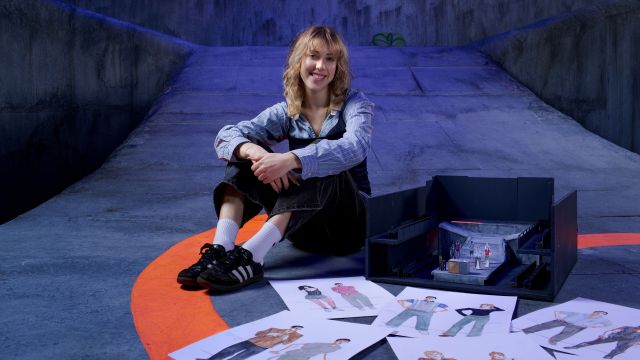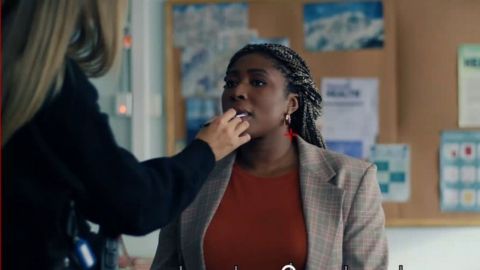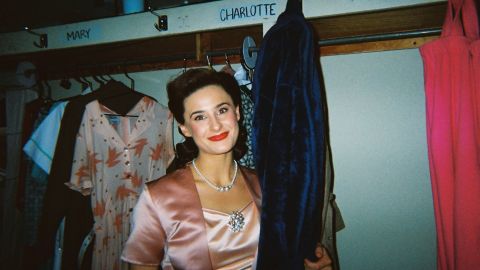Foxy Set and Costumes

NIDA student Paris Koppens had to blend the animal and human worlds in designing the set and costumes for the play First Love is the Revolution, staged in June. Isabella Nocetti reports.
An unconventional love story between a fox, Rdeca, and a boy, Basti, First Love is the Revolution starts when Basti catches Rdeca to make a coat out of her fur for his ill mother. The plan comes to a screeching halt when Basti finds that he can understand the fox when she speaks to him. Through the conversation the two become fast friends and eventually fall in love. When Rdeca's mother finds out about this love, the fox is cast out of her den, and the couple must find their own way in the world.
Isabella Nocetti: Can you describe the design of the stage?
Paris Koppens: We had the one end of the stage that was sloped upwards which became the “wild side”, and then the flatter end of the stage had the kitchen, so it became the “human side”. In the centre of the stage there’s a love heart which was Basti and Rdeca’s home that they create for each other between the two worlds.
IN: In the process of designing this, had you seen images of the play, or was it all original?
PK: I had never seen it before. For the first couple months of the project, I designed without looking at previous material so that I wouldn’t get influenced. I did eventually see some images online, but not until after I had designed the set.
IN: What was the process of building the set and setting up the stage?
PK: Most of the set was made of recycled MDF and Yellow Tongue sheeting, and it was made to look like concrete.
IN: What inspired the costume design?
PK: In my design process, I start with the costumes and the characters, and then the world evolves out of that. What I wanted to draw attention to was that both the foxes and Basti’s family are poor. We were also interested in finding what the Australian class archetype of the different animals would be. We also didn’t want there to be any obvious fox or animal signifiers. We wanted the animal concept to be more of a metaphor. Rdeca is a red fox, so we knew we wanted her to be in red, and that’s where her costume stemmed from. I wanted the humans to oppose the red of the foxes to create a sense of “two worlds colliding”.
IN: How did you determine what costumes animal characters would wear?
PK: We started with who they were as characters. So, the chickens are these dowdy, older women. They’re funny characters. We wanted them to look frumpy, but still be charming. That’s why we went with quilted vests and the matching hats.
IN: What was the process of making or acquiring the costumes?
PK: Most of the costumes for this show we were able to buy, source, and alter. A lot of the costumes we wanted to look worn and run down to demonstrate that level of class. So, the costumes were art-finished to look like they were older or were distressed. For example, the mole jacket was art finished, for which we added artificial dirt, cut holes, and sanded with steel wool to wear things down.
IN: What were some of the challenges of making people resemble animals?
PK: In the script, the animals have fur around their eyes, and fleas, so leaning away from that was a challenge. Also, making sure that the humans and animals had distinct differences between them so that you could see that they’re animals before it’s said. We made those distinctions with stylization. There are pieces in each of those costumes where you realize they’re not human.
IN: Tell me about the BFA Design for Performance course you’re taking at NIDA.
PK: We get to experience such a range of designs and have a balance of theatre and film. This year, I designed and helped direct a short film, and I am working on music video design.
NIDA's SPRING PRODUCTIONS ARE ON STAGE DURING NOVEMBER.






